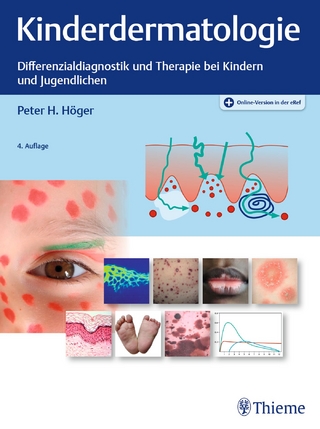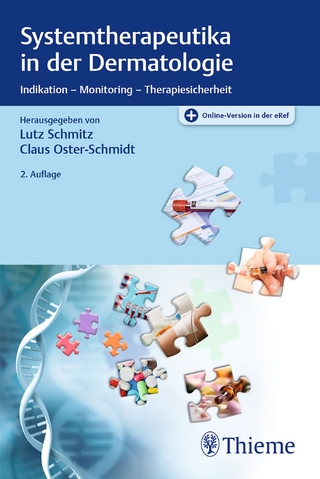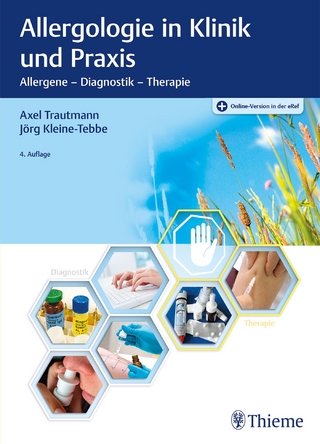
Experimental Studies on Guinea Pig's Eczema
Springer-Verlag Berlin and Heidelberg GmbH & Co. K
978-3-540-04564-9 (ISBN)
- Titel ist leider vergriffen;
keine Neuauflage - Artikel merken
I would like to take this occasion to thank her for her many years of collaboration both in the clinic and in the laboratory. I am also very grateful to Professor BUJARD who, in spite of the fact that he is retired, continues to work with us. We continually profit from his great experience. Dr.
Material and Technique.- A. Choice of Animal.- B. Macroscopic Control of Sensitization (Patch Test).- C. Histological Control of Sensitization.- I. Experimentation with Dinitrochlorobenzene (DNCB).- A. Method of Sensitization.- 1. Methods Employed in Our Studies.- a) Application of a Primary Toxic Solution.- b) Application of a Primary Non-Toxic Solution.- 2. Other Methods.- a) Sensitization by Epidermal Applications.- b) Sensitization by Injections.- c) Sensitization by Injections of DNCB Combined with Epicu- taneous Applications of a DNCB Solution..- d) Complex Methods of Sensitization.- B. Primary Toxic Reaction in Unsensitized Guinea Pigs.- 1. Evolution of Lesions. Histological Examination of Primary Toxic Lesions.- a) Flank.- b) Nipple.- 2. The Primary Toxic Effect and Acanthosis.- a) Flank.- b) Nipple.- 3. The Primary Toxic Reaction and Mitosis.- C. Specific Reaction of Sensitization ("Eczematous Reaction", "Delayed Reaction").- 1. Patch Test.- 2. Histological Examination of the Eczematous Reaction.- a) Flank.- b) Acanthosis of Flank.- c) Nipple: Evolution of Lesions.- d) Acanthosis of the Nipple.- e) The Specific Reaction of Sensitization and Mitosis.- D. The Histological Lesions of the Epidermis and Dermis.- 1. Spongiosis.- 2. Intra-Epidermal Vesicles.- 3. Subcorneal Vesicles.- 4. Dermal Infiltrate.- E. Sensitization of New Born Guinea Pigs (Small Subcorneal Vesicles) 21 Results.- a) Macroscopy.- b) Histology.- F. Appearance of Histological Eczematous Reactions During Sensitization.- G. Sensitization by Multiple Applications on the Nipple.- II. Experimentation with Other Substances.- A. Sensitization with Paranitrosodimethylaniline (PNDMA).- 1. Method of Sensitization.- 2. Primary Toxic Reaction.- 3. Specific Reaction due to Sensitization.- a) Macroscopic Reaction.- b) Histological Examination.- B. Sensitization with Citraconic Anhydride (CA).- 1. Method of Sensitization.- 2. Primary Toxic Reaction.- 3. Specific Reaction due to Sensitization.- Histological Examination.- C. Sensitization with Propionic Anhydride (PA).- 1. Method of Sensitization.- 2. Primary Toxic Reaction.- 3. Specific Reaction of Sensitization.- Histological Examination.- D. Sensitization with Paraphenylenediamine.- 1. Method of Sensitization.- 2. Primary Toxic Reaction.- 3. Specific Reaction of Sensitization.- Histological Examination.- E. Experiments Concerning Sensitization to Nickel.- Methods and Results of Sensitization.- F. Sensitization with Hexavalent Chromium.- 1. Method of Sensitization.- 2. Results.- G. Sensitization with Two Eczematogens.- 1. Dinitrochlorobenzene (DNCB) Followed by Paranitrosodimethylaniline (PNDMA).- 2. Paranitrosodimethylaniline (PNDMA) Followed by Dinitrochlorobenzene (DNCB).- 3. Citraconic Anhydride (CA) Followed by Dinitrochlorobenzene (DNCB).- III. Hematological Observations (Dinitrochlorobenzene, Citraconic Anhydride and Propionic Anhydride).- A. Eosinophils.- B. Basophils.- C. Lymphocytes.- IV. Comparison and Discussion of the Results of the Various Sensitizations.- A. Macroscopic Test.- B. Histological Examination.- C. Hematological Variations.- V. Remarks on Passive Transfer.- VI. Influence of Various Factors on Sensitization.- A. Influence of Corticosteroids.- B. Influence of X-Rays.- VII. Desensitization.- A. General Desensitization.- B. "Local Desensitization".- C. Duration of Desensitization and Resensitization.- Remark.- VIII. Discussion of Some Questions.- IX. Conclusion.- Literature.- Material and Technique.- I. Experimentation with Dinitrochlorobenzene (DNCB).- II. Experimentation with Other Substances.- III. Hematological Observations (Dinitrochlorobenzene, Citraconic Anhydride and Propionic Anhydride).- IV. Comparison and Discussion of the Results of the Various Sensitizations.- V. Remarks on Passive Transfer.- VI. Influence of Various Factors on Sensitization.- VII. Desensitization.- VIII. Discussion of Some Questions. IX. Conclusion.- Author Index.
| Erscheint lt. Verlag | 1.1.1969 |
|---|---|
| Zusatzinfo | 39 black & white illustrations, biography |
| Verlagsort | Berlin |
| Sprache | englisch |
| Gewicht | 360 g |
| Themenwelt | Medizin / Pharmazie ► Medizinische Fachgebiete ► Dermatologie |
| Naturwissenschaften ► Biologie ► Zoologie | |
| ISBN-10 | 3-540-04564-3 / 3540045643 |
| ISBN-13 | 978-3-540-04564-9 / 9783540045649 |
| Zustand | Neuware |
| Informationen gemäß Produktsicherheitsverordnung (GPSR) | |
| Haben Sie eine Frage zum Produkt? |
aus dem Bereich


